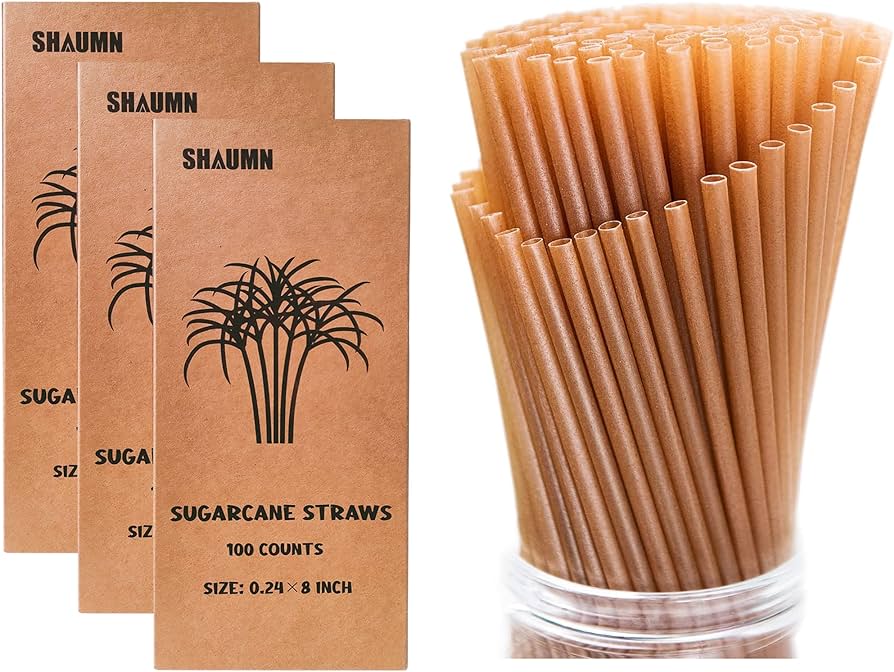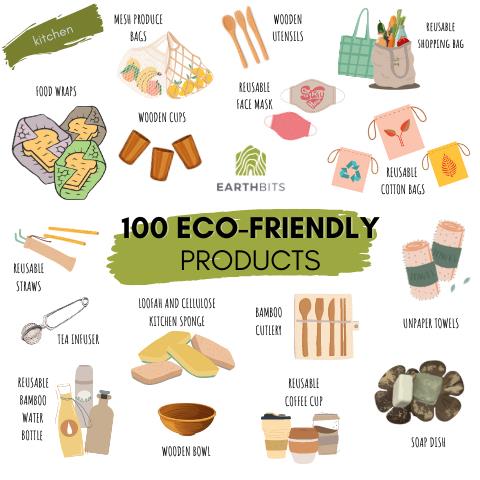
In today's environmentally conscious world, creating an eco-friendly home is not only a responsible choice, but also a practical one. By incorporating 10 must-have features, homeowners can significantly reduce their carbon footprint and live in harmony with the planet.
From energy-efficient appliances to rainwater harvesting systems, this article explores the essential elements that make a home sustainable and environmentally friendly. Whether you are a seasoned eco-warrior or just starting your journey towards a greener lifestyle, these features will help you create a home that promotes sustainability and a better future for all.
Energy-Efficient Appliances
Energy-efficient appliances are essential for creating an eco-friendly home. When it comes to reducing energy consumption and minimizing carbon footprint, investing in energy-efficient appliances can make a significant difference.
One key area to focus on is the heating, ventilation, and air conditioning (HVAC) system. By choosing energy-efficient HVAC systems, homeowners can not only reduce their energy bills but also contribute to a greener environment. These systems utilize advanced technology to optimize energy usage, resulting in lower emissions and less wasted energy.
Additionally, incorporating smart home technology into appliances can further enhance energy efficiency. Smart appliances can be programmed to operate at specific times, adjust temperature settings automatically, or even be controlled remotely, ensuring maximum energy conservation.
Solar Panels
One essential addition to an eco-friendly home is the installation of solar panels. Solar panel installation allows homeowners to harness the power of the sun and convert it into clean, renewable energy. This not only reduces reliance on fossil fuels but also helps to lower electricity bills and decrease carbon emissions.
When considering solar panel installation, it is important to choose panels with high efficiency. Solar panel efficiency refers to the amount of sunlight that is converted into usable electricity. Higher efficiency panels will produce more electricity for a given amount of sunlight, making them a more cost-effective and environmentally responsible choice.

Investing in solar panels is a practical and sustainable way to contribute to a greener future while enjoying the benefits of renewable energy.
Insulation
The next essential feature for an eco-friendly home is proper insulation to maximize energy efficiency and reduce heat loss. Insulation plays a crucial role in maintaining a comfortable indoor temperature while minimizing the need for excessive heating or cooling.
By creating a barrier between the interior and exterior, insulation prevents heat transfer, resulting in significant energy savings and reduced utility bills. Additionally, insulation benefits extend beyond energy efficiency. It also helps to reduce noise pollution, improve indoor air quality, and increase the overall durability of the building structure.
When it comes to the insulation installation process, it is important to choose the right type of insulation for your home, such as fiberglass, cellulose, or spray foam. Professional installation is recommended to ensure proper coverage and effectiveness.
LED Lights
LED lights are an essential feature of an eco-friendly home. They are energy-efficient lighting options that consume less electricity compared to traditional incandescent bulbs. This not only reduces your carbon footprint but also leads to significant cost savings on your electricity bills.
Energy-Efficient Lighting Options
Energy-efficient lighting options are essential for creating an eco-friendly home. By choosing energy-efficient bulbs, such as LED lights, homeowners can significantly reduce their energy consumption and lower their carbon footprint.
LED lights are known for their long lifespan and low energy consumption, making them an ideal choice for environmentally conscious individuals. These bulbs use up to 80% less energy than traditional incandescent bulbs, helping homeowners save on their energy bills while also reducing greenhouse gas emissions.

Additionally, LED lights produce less heat, making them safer and more efficient. For those looking for a smart lighting solution, LED lights can be easily integrated into a home automation system, allowing users to control and customize their lighting to maximize energy efficiency.
Cost Savings With LEDs
By maximizing the energy efficiency of lighting options, homeowners can achieve significant cost savings with LEDs.
LED lights, or Light Emitting Diodes, have become increasingly popular due to their long lifespan, low energy consumption, and cost-effectiveness. LED lights use up to 80% less energy than traditional incandescent bulbs, resulting in substantial savings on electricity bills. Furthermore, LEDs have a much longer lifespan, lasting up to 25 times longer than traditional bulbs. This means fewer replacements and less waste.
When conducting a cost analysis, it becomes evident that the initial investment in LED lights is outweighed by the long-term savings. Additionally, the environmental impact of LEDs is significantly lower, as they produce less carbon dioxide emissions.
Green Roofing
Green roofing has emerged as a sustainable solution for homeowners seeking to reduce their environmental impact. By installing a green roof, homeowners can enjoy numerous benefits for both their property and the planet.
Green roofing refers to the practice of planting vegetation on the roof of a building, creating a natural layer that provides insulation, absorbs rainwater, and reduces energy consumption. The benefits of green roofing are manifold. Not only does it improve air quality by filtering pollutants, but it also reduces stormwater runoff, thereby alleviating strain on municipal drainage systems.
Additionally, green roofs can extend the lifespan of the roof itself by protecting it from UV radiation and extreme temperature fluctuations. While the installation of a green roof requires initial investment and expertise, the long-term benefits make it a worthwhile addition to any eco-friendly home.

Composting
One sustainable practice that homeowners can adopt to further reduce their environmental impact is composting. Composting is the process of decomposing organic waste, such as food scraps, yard trimmings, and paper, into nutrient-rich soil.
The benefits of composting are numerous. Firstly, it reduces the amount of waste sent to landfills, which helps to reduce methane emissions and conserve landfill space. Additionally, composting enriches soil, improves its structure, and enhances its ability to retain moisture, which can lead to healthier plants and gardens. Composting also reduces the need for chemical fertilizers, thus minimizing the potential negative effects on the environment and human health.
To start the composting process, homeowners can create a compost pile or use a compost bin. It is important to balance the green (nitrogen-rich) and brown (carbon-rich) materials, turn the compost regularly to promote aeration, and ensure proper moisture levels.
Rainwater Harvesting
Rainwater harvesting is an essential feature for eco-friendly homes due to its numerous benefits. By collecting and storing rainwater, homeowners can reduce their reliance on municipal water sources, conserve water, and lower their water bills.
The installation and maintenance process involves setting up a rainwater collection system, such as a rooftop catchment system, and ensuring regular cleaning and maintenance to optimize water quality.
Ultimately, rainwater harvesting is a cost-effective solution that offers long-term savings while promoting sustainable water usage.
Benefits of Rainwater Harvesting
The benefits of incorporating rainwater harvesting into an eco-friendly home are numerous and significant. One of the key advantages is the installation process, which is relatively simple and cost-effective.

Rainwater can be collected from rooftops using gutters and downspouts, and then stored in tanks or barrels for later use. This system allows homeowners to utilize rainwater for various purposes, such as watering plants, flushing toilets, or even doing laundry.
By using rainwater instead of tap water, households can reduce their reliance on municipal water supplies and lower their water bills. Furthermore, rainwater harvesting promotes long-term savings by conserving water resources and reducing the strain on local water sources.
It is a sustainable solution that not only benefits the environment but also provides financial advantages for homeowners in the long run.
Installation and Maintenance Process
To successfully implement rainwater harvesting in an eco-friendly home, homeowners must carefully consider the installation and maintenance process.
The installation process involves several key steps. First, homeowners need to assess the size and location of their property to determine the optimal placement for rainwater collection systems, such as gutters and downspouts. They should also consider the capacity of the storage tank and whether it needs to be buried or above ground.
Additionally, homeowners must ensure that the system is properly connected to the home's plumbing system to enable efficient use of the harvested rainwater.
Maintenance tips for rainwater harvesting systems are essential to ensure their longevity and functionality. Regular inspection and cleaning of gutters and downspouts will prevent debris from clogging the system. It is also important to check for leaks and repair any damages promptly.

Furthermore, homeowners should monitor the quality of the harvested rainwater and consider installing a filtration system to remove impurities. Additionally, regular maintenance of the storage tank, including cleaning and disinfection, is necessary to prevent microbial growth and ensure the water remains safe for use.
Cost-Effectiveness and Long-Term Savings
Implementing rainwater harvesting in an eco-friendly home can lead to significant cost-effectiveness and long-term savings. By collecting and storing rainwater, homeowners can reduce their reliance on municipal water supplies, resulting in lower water bills. Additionally, rainwater is typically free of chemicals and additives, making it ideal for watering plants, washing cars, and other non-potable uses.
Here are three cost-effective home upgrades that can provide long-term financial benefits:
- Rainwater harvesting system: Installing a rainwater collection system allows homeowners to capture rainwater from rooftops and store it for future use. This eliminates the need to use treated water for outdoor activities, reducing water expenses.
- Water-efficient appliances: Upgrading to water-efficient appliances, such as low-flow toilets and showerheads, can significantly reduce water consumption. This not only saves money but also conserves water resources.
- Drought-resistant landscaping: Planting drought-resistant plants and using mulch can help conserve water in the garden. These plants require less irrigation, leading to lower water bills and decreased maintenance costs.
Sustainable Materials
One essential feature of an eco-friendly home is the use of sustainable materials. Sustainable building and eco-friendly construction have become increasingly popular as more homeowners recognize the importance of minimizing their environmental impact.
Sustainable materials are those that are responsibly sourced, have a low carbon footprint, and can be recycled or repurposed at the end of their lifespan. Examples of sustainable materials include bamboo, reclaimed wood, recycled glass, and natural stone. These materials not only help reduce the depletion of natural resources but also improve indoor air quality and create a healthier living environment.
Additionally, incorporating sustainable materials can add aesthetic appeal and value to a home. By choosing eco-friendly materials, homeowners can contribute to a greener and more sustainable future.
Natural Cleaning Products
Another important aspect of creating an eco-friendly home is the use of natural cleaning products, which can further minimize the environmental impact of daily household tasks. By opting for natural cleaning alternatives and homemade cleaners, you can reduce your exposure to harmful chemicals while also contributing to a healthier planet.

Here are three reasons why incorporating natural cleaning products into your home is a great idea:
- Environmental benefits: Natural cleaning products are made from renewable resources and biodegradable ingredients, which means they break down easily and have minimal impact on the environment.
- Health benefits: Traditional cleaning products often contain harsh chemicals that can irritate the skin, eyes, and respiratory system. Natural cleaning alternatives, on the other hand, are made from plant-based ingredients that are safer for both you and your family.
- Cost-effective: Homemade cleaners can be made using simple ingredients like vinegar, baking soda, and lemon juice, which are often cheaper than store-bought chemical cleaners. Making your own cleaning products can help you save money while still keeping your home clean and fresh.
Low-Flow Water Fixtures
When it comes to creating an eco-friendly home, one important aspect to consider is water conservation.
Low-flow water fixtures are a great way to minimize water usage without sacrificing functionality. These fixtures, such as low-flow toilets and showerheads, are designed to reduce the amount of water that is wasted, resulting in significant water savings and lower utility bills.
Water Conservation Methods
How can homeowners effectively conserve water in their eco-friendly homes?
Here are three water conservation methods that can help reduce water usage and contribute to a more sustainable lifestyle:
- Install water-saving faucets: Upgrading to water-saving faucets can significantly reduce water consumption in the home. These fixtures are designed to limit water flow without compromising functionality or water pressure. By using aerators and flow restrictors, water-saving faucets can reduce water usage by up to 30% or more.
- Implement greywater recycling: Greywater refers to gently used water from sources like sinks, showers, and washing machines. Instead of letting this water go to waste, it can be collected and treated for reuse in irrigation systems or toilet flushing. Greywater recycling systems can help save hundreds of gallons of water per household each year.
- Fix leaks promptly: Even minor leaks can waste a significant amount of water over time. Regularly check for leaks in faucets, toilets, and pipes, and fix them promptly to avoid unnecessary water wastage.
Benefits of Low-Flow Fixtures
One of the key water conservation methods discussed in the previous subtopic is the installation of water-saving faucets, and the benefits of these low-flow fixtures cannot be overstated. Low-flow fixtures are designed to reduce the amount of water that is wasted during everyday activities such as washing hands or doing dishes. By using less water, they help to conserve this precious resource and contribute to a more sustainable environment.
In addition to saving water, low-flow fixtures also offer other benefits. For example, they can help to lower water bills by reducing the amount of water used in the home. This can lead to significant savings over time. Furthermore, low-flow fixtures can also help to reduce the strain on wastewater treatment facilities by decreasing the amount of water that needs to be treated.

Another advantage of low-flow fixtures is that they can be used in conjunction with other water-saving technologies, such as greywater systems and water-efficient landscaping. Greywater systems allow for the reuse of water from sources such as showers and laundry, reducing the need for fresh water. Water-efficient landscaping, on the other hand, involves using plants and irrigation systems that require less water to thrive.
Frequently Asked Questions
Are There Any Financial Incentives or Tax Credits Available for Installing Energy-Efficient Appliances in a Home?
Financial incentives and tax credits are available for homeowners who install energy-efficient appliances. These incentives serve as a reward for promoting sustainability and reducing carbon emissions. They can help offset the initial costs of purchasing and installing these appliances.
How Long Do Solar Panels Typically Last and What Is the Maintenance Required?
Solar panels typically last for 25 to 30 years and require minimal maintenance. Regular cleaning to remove dirt and debris is recommended. Although the initial solar panel installation cost can be high, the long-term benefits of solar energy outweigh the expense.
What Are the Different Types of Insulation Materials and Which One Is the Most Environmentally Friendly?
Insulation materials play a crucial role in reducing energy consumption and environmental impact in homes. There are various eco-friendly options available, including cellulose, recycled denim, and wool. Consider financial incentives and the longevity of materials when making a choice.
Can LED Lights Be Used in All Types of Light Fixtures or Are They Limited to Specific Ones?
LED lights can be used in a variety of light fixtures, including outdoor fixtures. However, their compatibility with dimmer switches may vary. It is important to check the product specifications or consult with a professional to ensure proper usage.
How Does Green Roofing Contribute to Reducing Energy Consumption and Improving the Overall Sustainability of a Home?
Green roofing contributes to reducing energy consumption and improving the overall sustainability of a home by providing insulation, reducing heat island effect, and collecting rainwater. These benefits align with the goals of energy efficiency and environmental conservation.
 Business & FinanceHealth & MedicineTechnologyLifestyle & CultureScience & EnvironmentWorld NewsPrivacy PolicyTerms And Conditions
Business & FinanceHealth & MedicineTechnologyLifestyle & CultureScience & EnvironmentWorld NewsPrivacy PolicyTerms And Conditions
